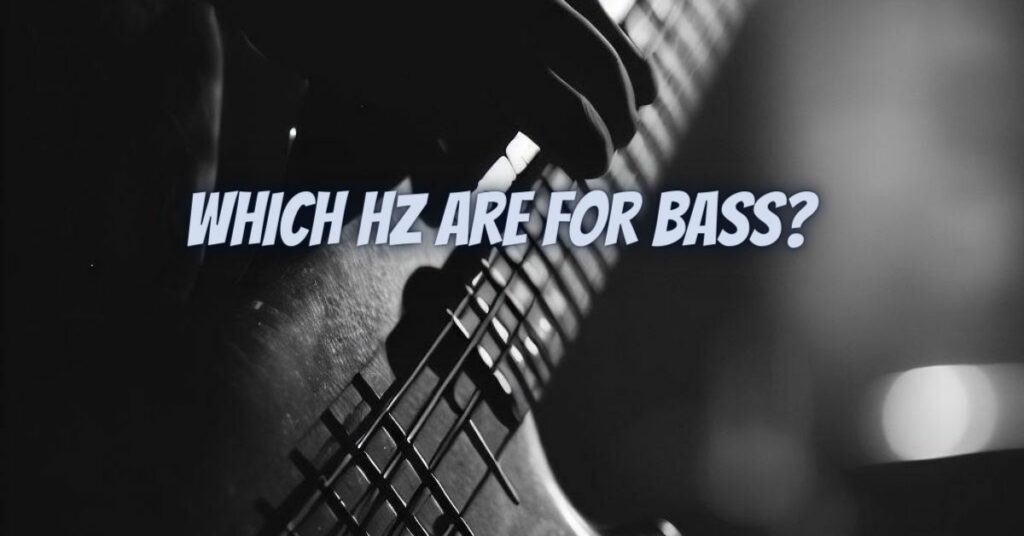Bass frequencies are the heartbeat of music, adding depth, groove, and emotion to our favorite tunes. To truly appreciate and control the bass in your audio experience, it’s crucial to understand which Hz (Hertz) are associated with bass. In this enlightening article, we’ll explore the specific Hz ranges where bass frequencies reside, the role they play in music, and how to harness the power of these frequencies for an immersive listening experience.
Understanding the Frequency Spectrum
To delve into the world of bass frequencies, it’s essential to grasp the concept of the frequency spectrum:
- Hertz (Hz): Hertz is the unit of measurement for frequency, representing the number of cycles or vibrations that occur in one second. In the context of sound, Hz refers to the pitch or frequency of a sound wave, with lower values indicating lower-pitched sounds and higher values representing higher-pitched sounds.
- Frequency Spectrum: The frequency spectrum is the range of audible frequencies that the human ear can perceive. It typically spans from 20Hz to 20,000Hz (20kHz), with 20Hz being the lowest and 20kHz the highest.
Locating the Bass Frequencies
Bass frequencies encompass a specific range within the frequency spectrum, and they are categorized as follows:
- Sub-Bass (20Hz – 60Hz): Sub-bass frequencies are the deepest and most powerful bass frequencies. These low-frequency sounds are often felt as vibrations rather than heard as distinct tones. Sub-bass is responsible for creating the earth-shaking rumble in explosions, the deep notes of a bass guitar, and the resonant thump in electronic dance music (EDM).
- Bass (60Hz – 250Hz): The bass range includes frequencies that are slightly higher in pitch but still contribute significantly to the richness and warmth of music. This range provides the foundational notes for musical instruments like the acoustic and electric bass guitars, as well as the punch and body of kick drums and low-frequency effects (LFE) in movies.
The Role of Bass Frequencies in Music
Bass frequencies serve several critical roles in music:
- Rhythm and Groove: Bass frequencies provide the rhythmic backbone of a song, creating a groove that moves listeners and compels them to dance or tap their feet.
- Harmonic Foundation: The bass range establishes the harmonic foundation of music, forming the basis upon which other instruments and vocals build melodies and harmonies.
- Emotional Impact: Deep bass frequencies can evoke powerful emotions, adding drama, intensity, and suspense to music and cinematic soundtracks.
- Genre Characteristics: Different music genres emphasize bass frequencies to varying degrees. For instance, genres like hip-hop, dubstep, and EDM heavily rely on sub-bass for their signature sound.
- Physical Sensation: Sub-bass frequencies can be physically felt, enhancing the live concert experience and adding a tactile dimension to sound.
Understanding which Hz are for bass is a key step in appreciating and controlling the bass in your audio experience. From the earth-shaking sub-bass frequencies (20Hz – 60Hz) to the foundational bass range (60Hz – 250Hz), these frequencies play a pivotal role in music, rhythm, and emotion.
Musicians, audio enthusiasts, and anyone looking to enhance their listening experience can harness the power of bass by exploring these specific Hz ranges, optimizing their audio systems, and appreciating the depth and richness that bass frequencies bring to their favorite music and soundtracks.


